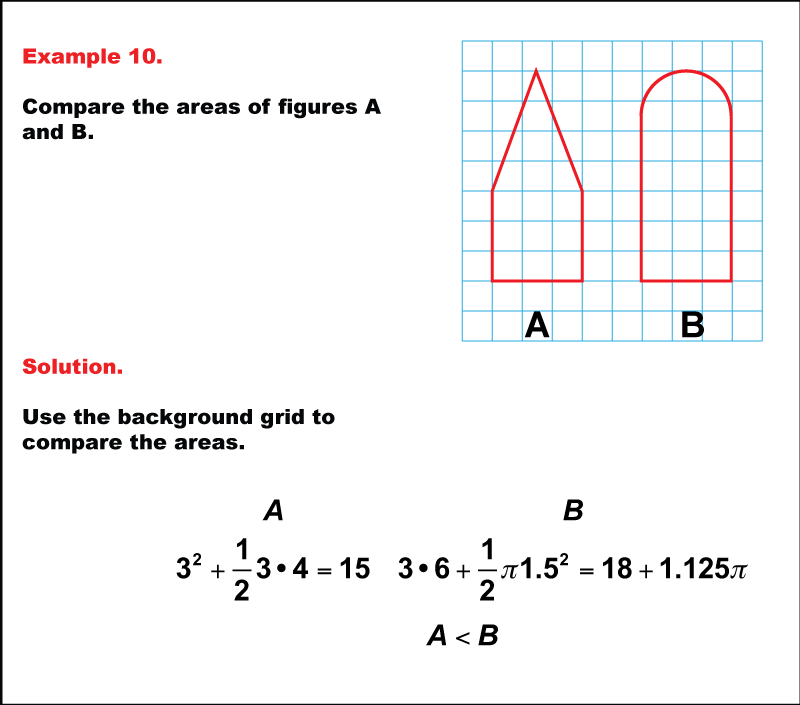
Display Title
Math Example: Comparing Area: Example 10
Display Title
Math Example: Comparing Area: Example 10

Topic
Geometry
Description
This example compares the areas of two complex shapes (Figures A and B) drawn on a grid. Figure A is a composite of a square with a triangular top, while Figure B is a semicircle on top of a rectangle. Calculating their areas, we find that Figure A has an area of 32 + (1/2) * 3 * 4 = 15 square units, and Figure B has an area of 3 * 6 + (1/2) * π * 1.52 = 18 + 1.125π square units. Comparing these results, we can conclude that A < B, meaning Figure B has a larger area than Figure A.
This example is part of a series designed to teach students about comparing areas of different geometric shapes. By presenting complex shapes composed of various geometric figures, students learn to apply multiple area formulas and combine them to solve more intricate problems. This approach helps reinforce the concept that complex shapes can be broken down into simpler components for area calculation.
Exposing students to multiple worked-out examples is essential for developing a deep understanding of area comparison across different shapes. Each example provides a unique scenario, allowing students to apply their knowledge to new situations. This repetition helps solidify the concept and improves students' ability to tackle various area-related problems independently, especially when dealing with composite figures and shapes involving curved elements.
Teacher Script: "Now we're looking at two very different shapes. How can we find their areas? For Figure A, we need to combine the areas of a rectangle and a triangle. For Figure B, we're dealing with a rectangle and a semicircle. Let's calculate step by step. What do you notice about the results? Figure B's area involves π, while Figure A's doesn't. How can we compare these? This example shows us that real-world area comparisons often involve combining different shapes and dealing with both whole numbers and irrational numbers like π. Can you think of situations where you might encounter shapes like these in everyday life?"
For a complete collection of math examples related to Geometry click on this link: Math Examples: Comparing Areas Collection.
| Common Core Standards | CCSS.MATH.CONTENT.6.G.A.1 |
|---|---|
| Grade Range | 6 - 7 |
| Curriculum Nodes |
Geometry • Quadrilaterals • Area and Perimeter of Quadrilaterals • Triangles • Area and Perimeter of Triangles • Circles • Area and Circumference |
| Copyright Year | 2024 |
| Keywords | comparing areas |